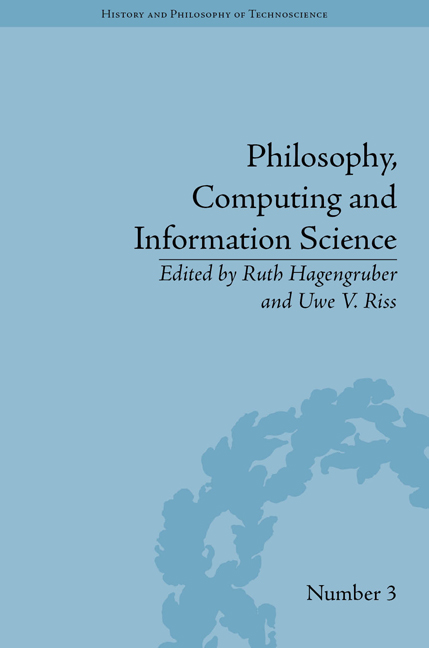Book contents
- Frontmatter
- CONTENTS
- List of Contributors
- List of Figures and Tables
- Introduction: Philosophy's Relevance in Computing and Information Science
- Part I Philosophy of Computing and Information
- Part II Complexity and System Theory
- Part III Ontology
- Part IV Knowledge Representation
- Part V Action Theory
- 13 Knowledge and Action between Abstraction and Concretion
- 14 Action-Directing Construction of Reality in Product Creation Using Social Software: Employing Philosophy to Solve Real-World Problems
- 15 An Action-Theory-Based Treatment of Temporal Individuals
- 16 Four Rules for Classifying Social Entities
- Part VI Info-Computationalism
- Part VII Ethics
- Notes
- Index
16 - Four Rules for Classifying Social Entities
from Part V - Action Theory
- Frontmatter
- CONTENTS
- List of Contributors
- List of Figures and Tables
- Introduction: Philosophy's Relevance in Computing and Information Science
- Part I Philosophy of Computing and Information
- Part II Complexity and System Theory
- Part III Ontology
- Part IV Knowledge Representation
- Part V Action Theory
- 13 Knowledge and Action between Abstraction and Concretion
- 14 Action-Directing Construction of Reality in Product Creation Using Social Software: Employing Philosophy to Solve Real-World Problems
- 15 An Action-Theory-Based Treatment of Temporal Individuals
- 16 Four Rules for Classifying Social Entities
- Part VI Info-Computationalism
- Part VII Ethics
- Notes
- Index
Summary
Introducing Social Entities
Many top-level ontologies like Basic Formal Ontology (BFO) have been developed as a framework for ontologies in the natural sciences. The aim of the present essay is to extend the account of BFO to a very special layer of reality, the world of social entities. While natural entities like bacteria, thunderstorms or temperatures exist independently from human action and thought, social entities like countries, hospitals or money come into being only through human collective intentions and collective actions. Recently, the regional ontology of the social world has attracted considerable research interest in philosophy – witness, e.g., the pioneering work by Gilbert, Tuomela and Searle. There is a considerable class of phenomena that require the participation of more than one human agent: nobody can tango alone, play tennis against oneself, or set up a parliamentary democracy for oneself.
Through cooperation and coordination of their wills and actions, agents can act together – they can perform social actions and group actions. An important kind of social action is the establishment of an institution (e.g. a hospital, a research agency or a marriage) through mutual promise or (social) contract. Another important kind of social action is the imposition of a social status on certain entities. For example, a society can impose the status of being a 20 Euro note on certain pieces of paper or the status of being an approved medication to a certain chemical substance.
- Type
- Chapter
- Information
- Philosophy, Computing and Information Science , pp. 189 - 200Publisher: Pickering & ChattoFirst published in: 2014

